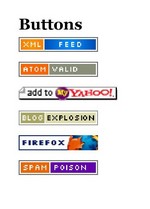A story that vindicates my approach to time management
In this post I talked about my approach to time management. Graham has this great story on his site that illustrates the same approach but much more eloquently!
A professor stood before his philosophy class and had some items in front of him.When the class began, wordlessly, he picked up a very large and empty mayonnaise jar and proceeded to fill it with golf balls.
He asked the students if the jar was full.They agreed that it was.
The professor then picked up a box of pebbles and poured them into the jar. He shook the jar lightly, and the pebbles rolled into the open areas between the golf balls.
He then asked the students again if the jar was full; they agreed it was.
The professor next picked up a box of sand and poured it into the jar. Of course, the sand filled up everything else.
He asked once more if the jar was full. The students responded with a unanimous “yes.”
The professor then produced two cups of coffee from under the table and poured the entire contents into the jar, effectively filling the empty space between the sand. The students laughed.
“Now,” said the professor, as …


 It may be an old machine, but it is still in many ways a near perfect design. I have
It may be an old machine, but it is still in many ways a near perfect design. I have 
 In this
In this 
 X1 Technologies on Friday started shipping a version of its X1 Desktop Search software that supports Lotus Notes, the first time that the local and network search product has deigned to deal with IBM’s messaging product. I installed it but Notes does not appear in the list of Email systems to index, so I will have to investigate 🙁
X1 Technologies on Friday started shipping a version of its X1 Desktop Search software that supports Lotus Notes, the first time that the local and network search product has deigned to deal with IBM’s messaging product. I installed it but Notes does not appear in the list of Email systems to index, so I will have to investigate 🙁
 This
This 
 My daughter has recently inherited by old Tablet PC, a TC1000. She has an auto-immune disorder and secondary
My daughter has recently inherited by old Tablet PC, a TC1000. She has an auto-immune disorder and secondary 
 I have thought for a long time that
I have thought for a long time that 
 I only work part-time and have been struggling to find a way to manage my time, it’s been a long process and has so fair failed to control overload.
I only work part-time and have been struggling to find a way to manage my time, it’s been a long process and has so fair failed to control overload.